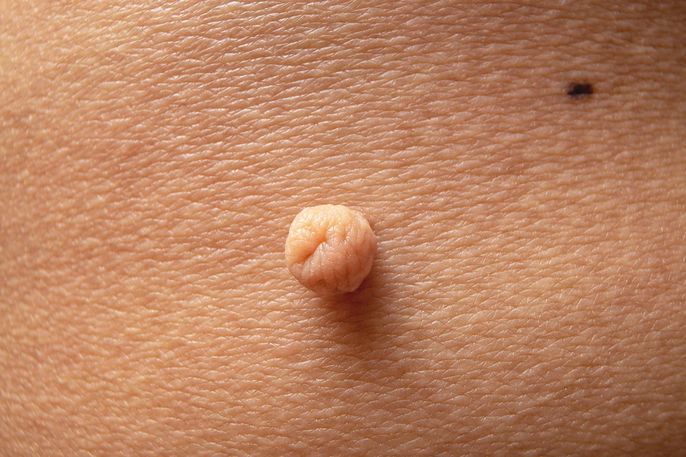A skin tag is a small benign mass similar to a wart. They are most frequently noted on the neck, armpit and groin, and are usually 2 and 5 mm in diameter. They are usually not associated with any symptoms.
It is not fully known what causes skin tags, but it is believed that its appearance is related to genetic factors and insulin resistance. They are most commonly seen in diabetics and people with metabolic syndrome.
Skin tags, also referred to as a acrochordon, can have the same tone as the skin or be a little darker. They can also increase in size over time depending on the person's condition. For example, the greater the insulin resistance, for example, the greater the tendency for fibroids to grow.

Common causes
The cause skin tags is not fully known, however it is believed that the appearance of these lesions is related to genetic and family factors. Some studies show that there is a relationship between skin tags and diabetes, metabolic syndrome and/or insulin resistance.
Skin tags tend to appear more frequently in people over 30 years of age who have a family history of skin tags. They are also more likely to appear in those with a history of hypertension, obesity, diabetes /or metabolic syndrome. There is also a greater chance of them to develop during pregnancy or with basal cell carcinoma.
These wart-like lesions can grow quickly and tend to appear more frequently in the groin, eyelids, armpits and neck. Read more about anal skin tags and how they can present.
Also recommended: Warts: Symptoms, 5 Types (w/ Pictures) & Treatment tuasaude.com/en/wartsTreatment options
In most cases, skin tags do not pose any risk to health and do not cause symptoms. They are usually benign, meaning they do not require any specific treatment. However, many people may be uncomfortable with their appearance, and can request their removal.
Skin tag removal is carried out in a dermatology office using different techniques, which can depend on the characteristics and location of the skin take. Small skin tags can be removed with a simple excision or through cryosurgery, in which the skin tag is frozen with liquid nitrogen and falls off.
Large skin tags may require a more extensive surgical procedure to completely remove it. In these cases, post-care measures are needed to heal the wound.






























